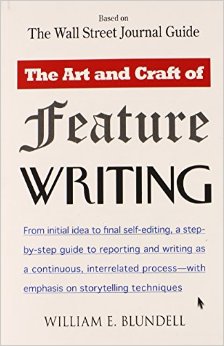
Blundell’s guide for feature writing is divided according to the writing process. He started by finding an idea, sources, followed by shaping the idea, then discussing the story dimensions, then planning and execution, and organizing the piece. He dedicated a special chapter for handling the key story elements; like the lead and the ending.
It is hard to jump through the chapters of the book or to skip chapters. It is built piece onto the other.
I was shocked by his list of what readers like and do not like…. Dogs to be onto the top of the list! People who are actors are much more preferred by the readers than the observers. Nevertheless, at some cases, the observers make a well formed analysis and explanation, thus the reader can understand, link unrelated events and show a zoom-out picture to the reader.
He emphasized on keeping the range of the story “narrow” to be sharp. He summarized the forethought to the reporter as follows: range of the story, central message/theme, the approach and the tone as a storyteller.
The range is the cause and effect map, where the reporter must consider: time, distance, and constituencies.
The theme is the message, it must concentrate on the action. It embeds the lead within it.
The approach can be a general profile approach, microcosm approach or round-up approach. The general profile focuses on the differences, while the microcosm profile focuses on the similarities. The round-up approach is safer by providing many voices.
The tone is the voice. Blundell summarized it in an easy method. He said: “Always consider your own feelings about the story idea before you start reporting and throughout…. If you are amused, skeptical, outraged…Hang on to your emotions… Your reporting and writing will be guided toward values they may not have included before.”
